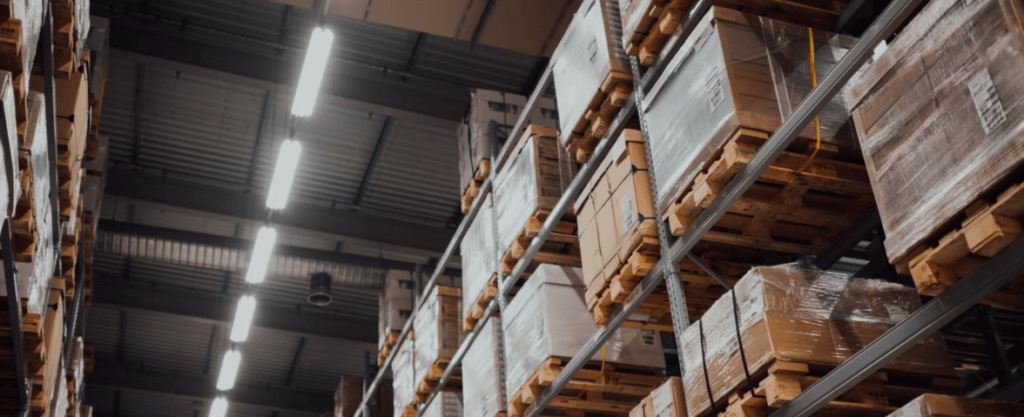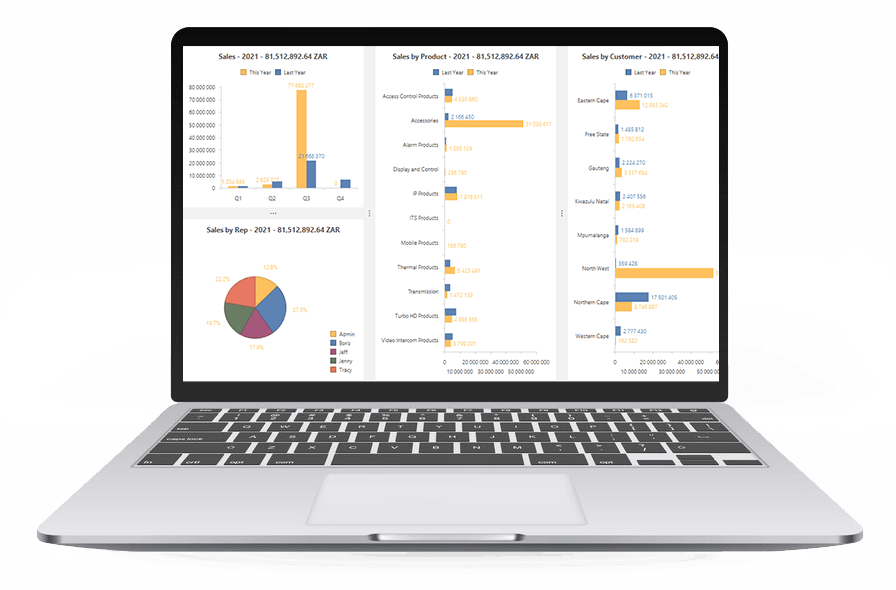Warehousing Post-Pandemic Goes Digital in 2021

The global COVID-19 pandemic has altered how manufacturers view warehousing and distribution. Global lockdown caused demand and supply shock waves to ripple around the globe and shift at lightning speed as consumers were forced to swap in-store purchases to online shopping, changing warehousing post pandemic.
In spite of the enduring crisis, a silver lining seems to be emerging. Recent research from PWC shows that, in spite of nearly 70% of businesses facing at least one major crisis in the five years preceding COVID-19, 42% reported that they have exited the crisis “in a better place.”
Many manufacturers have shifted focus to a more direct-to-consumer (DTC) business model or pivoted to new markets due to entire supply chains being disrupted.
One thing is clear: the crisis has clearly shown where the gaps in manufacturing processes are, what needs improvement, and how manufacturers can gain a competitive advantage. The primary area of opportunity in this process: warehouse management.
At a Glance: ERP and Warehousing in 2021
Organisations continue to show a preference for cloud ERP (enterprise resource planning applications hosted in the cloud). According to Statista, the cloud ERP market is expected to grow 13.6% per year worldwide, and reach $40.5 billion by 2025.
ERP solutions continue to expand integration capabilities with other technologies, such as internet of things (IoT) devices, for greater automation and more visibility.
A back-office and warehousing solution that can support remote work has become critical as businesses continue to depend on dispersed workforces post-lockdown.
First, how Does ERP and Digital Transformation Help Warehousing?
While digital transformation – specifically those technologies that give you clarity and live insight into your warehouse management and supply chain – is essential to gaining and maintaining the advantage now and after a disruption, it is important to note that digitisation is not just about patching on new apps and technology to old processes.
Digitisation is fundamentally about reviewing and optimising existing business processes towards streamlined operations and utilising technology to do so. Unoptimised warehouse processes and outdated systems will radically increase costs and lower profits.
ERP – or Business Operating Systems (BOS) – gives everyone on and off the floor real-time access to data and information about what’s happening in your warehouse. This ensures:
- Less human error: A person typically makes one data capture error every 300 characters. BOS captures data automatically and in real-time, minimising inaccuracies and downstream issues such as inventory stock outs or unnecessary reorders.
- Time saved: So much time is wasted when orders are waiting in someone’s email inbox or are lost on a handwritten piece of paper in a file. BOS automates this instantly, ensuring real-time processing, eliminating wasted time and delays.
- Money saved: Bloated inventory levels or out-of-stock scenarios all cost money. Digitisation improves accuracy, and saves money.
- Improved clarity and transparency: BOS stores all the business and back office data on a single platform, integrating all departments and customer information into one system. Up to 90% increase in visibility is experienced when employees have access to real-time information from a single source of truth.
- Better customer and employee satisfaction: Late shipments or deliveries cause customer dissatisfaction which often lands on your staff’s lap to deal with. BOS ensures real-time order processing and inventory management, which means customers receive their orders accurately and on time (and keep coming back for more), and your staff is less stressed and more productive.
These results are what make investing in BOS solutions worthwhile, and produce stronger and better organisations after soldiering through a crisis like COVID-19.
How to Embrace Digitisation in Your Warehouse Today

It is fast becoming the reality that technology no longer just improves efficiency, it is also a key driver to improve growth. According to a survey presented by the MHI Annual Industry Report, as many as 80% of respondents believe that the digital supply chain will be the dominant model within the next five years. For 20%, it is already the dominant model.
If you’re waiting until the end of the Covid-disruption to start addressing gaps in your warehousing through digitisation and ERP, you’re already too late.
Technology has indeed moved on. Here’s how you can too.
1. Upgrade or Implement Cloud ERP
The most accessible way to deploy the full benefits of digital transformation in your warehouse is by implementing ERP for warehousing. Or – if you have an existing, outdated BOS system – upgrade your legacy system to a cloud-based BOS application. Choose a BOS system that can integrate with your barcode scanner system, that is supported in local time, and is hosted in the cloud. The ERP-implementation process can be lengthy, so start the process now to activate the long-lasting benefits sooner rather than later.
2. Gather and Process Data Real-time (Go Paperless)
Going paperless reduces data lag and human errors. BOS integrates work orders and barcode scanning into a single application, and stores data such as picking slips, stock count, and delivery notes into your BOS application. This is a simple way to capture and access accurate, live data about your on-the-floor transactions and eliminate paper, delays, and human error.
3. Analytics and Forecasting
Warehouses are predicted to play a pivotal role in driving customer satisfaction, effectively forecasting product demand, and optimising available resources. Data trends are not only analysed to anticipate stock demand but also to optimise warehouse capacity and asset utilisation. Consequently, the need for applications that accurately forecast and support data-driven decision-making is on the rise.
What Does the Future Hold for ERP and Warehousing?
The migration to cloud BOS is certain to continue accelerating as more manufacturers realise how much easier it is to gain the velocity and agility needed to compete in today’s competitive marketplace.
Additionally, there will be further expansion into BOS’s supply chain management capabilities to mitigate supply chain disruptions or any other changes in global economic conditions. As ABI Research Principal Analyst Michael Larner said, “Supply chain orchestration requires software to be more than a system of record, [but should also] provide risk analysis and run simulations, enabling manufacturers to understand and prepare for supply chain shocks.”
In the immediate future, organisations that have already implemented cloud BOS will likely look for more ways to take full advantage of the modules and cloud capabilities. This would include facilitating remote work access for all staff – not just warehousing personnel – and increasing automation in workflows.
Making use of integrated BOS or ERP solutions increases efficiency and saves time and money, putting manufacturers in a strong position to not only see it through after the pandemic but to be one of the 42% of those that increase their revenue and advance their competitive advantage well into the future.

